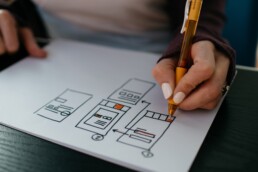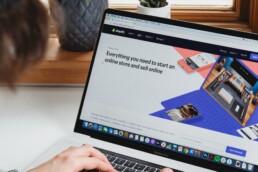Enhancing Visual Appeal and Usability for Optimal Performance
In the competitive world of e-commerce, a well-designed website is crucial for attracting customers, driving sales, and building brand loyalty. Understanding the right metrics and key performance indicators (KPIs) is essential to measure the success of your e-commerce site.

Metrics and KPIs in E-Commerce Web Design
Metrics and KPIs are vital tools for assessing the performance of an e-commerce website. While metrics provide data on various aspects of user interaction, KPIs are specific indicators aligned with business objectives, such as sales and customer satisfaction. Key metrics and KPIs in e-commerce web design include traffic metrics (page views, unique visitors, session duration), conversion metrics (conversion rate, cart abandonment rate, average order value), engagement metrics (bounce rate, pages per session, time on site), customer satisfaction metrics (Net Promoter Score, customer satisfaction scores, reviews), and performance metrics (site speed, mobile responsiveness, uptime).
Visual appeal plays a significant role in capturing the attention of potential customers and encouraging them to explore your site further. A visually appealing e-commerce site can enhance user experience, reduce bounce rates, and increase conversion rates. First impressions are crucial in e-commerce. A visually attractive site with a clean, professional design can establish credibility and trust, making users more likely to make a purchase. High-quality images, cohesive color schemes, and consistent branding all contribute to a positive first impression.
The way products are presented on your site can significantly impact sales. High-resolution images, 360-degree views, and detailed product descriptions help customers make informed purchasing decisions. This can lead to higher conversion rates and reduced return rates. A clear visual hierarchy guides users through your site, highlighting important elements such as product categories, featured items, and calls to action. Effective use of visual hierarchy can improve navigation and user experience, leading to increased engagement and conversions.
Usability is critical in ensuring that customers can easily find products, navigate the site, and complete transactions. Good usability directly influences key e-commerce metrics such as conversion rates and customer satisfaction. Easy-to-use navigation helps customers find products quickly, reducing frustration and improving the shopping experience. Clear menus, search functionality, and well-organized categories are essential components of intuitive navigation.
A streamlined checkout process is vital for reducing cart abandonment rates. Simplified forms, multiple payment options, and a clear progress indicator can make the checkout experience smoother and more efficient. With an increasing number of customers shopping on mobile devices, mobile optimization is crucial. A responsive design ensures that your site looks and functions well on all devices, leading to higher mobile conversion rates and improved user satisfaction.
Fast load times are essential for retaining customers. Slow sites can lead to high bounce rates and lost sales. Optimizing images, leveraging content delivery networks (CDNs), and minimizing code can help improve site speed and overall performance. Providing accessible customer support through live chat, comprehensive FAQs, and easy-to-find contact information can enhance the user experience and increase customer satisfaction. This support is crucial for addressing customer queries and building trust.
Combining Visual Appeal and Usability
The synergy between visual appeal and usability is key to creating a successful e-commerce website. While visual appeal attracts and engages users, usability ensures they can navigate the site effortlessly and complete their purchases. Consider an online fashion retailer that redesigned its website to enhance visual appeal and usability. By implementing a modern, cohesive design and improving product presentation with high-quality images and detailed descriptions, the retailer saw a 30% increase in conversion rates. Additionally, by optimizing the checkout process and ensuring mobile responsiveness, they reduced cart abandonment rates by 25%. These changes not only improved user experience but also boosted key e-commerce metrics.
In e-commerce web design, understanding and leveraging metrics and KPIs is essential for measuring success and making informed improvements. Visual appeal and usability are critical factors that significantly influence these metrics. By creating a visually appealing and user-friendly e-commerce site, you can enhance user experience, drive engagement, and achieve your business goals. Remember, a well-designed e-commerce site not only looks good but also provides a seamless, enjoyable shopping experience that translates into measurable success.
6 Must-Have Ecommerce Web Design Elements
All websites aren’t created equal. There lies a vast set of differences between the inner workings of a business (informational site) and an ecommerce site. The goal is the same, to inform the user and lead them to a conversion - however…
All Sites Are Not Created Equal: Choosing the Right Website Type
In the early stages of a new company or brand launch, a website presence and website type is the first stop to gain exposure and begin market disruption. Many think that a website is a one size fits all approach, and if not guided correctly, ends…
The Interactive Storefront: Designing for Ecommerce
Online sales worldwide have reached an all-time high in the trillions, and it’s clear that most consumers do much of their shopping, if not all, online. This trend is only on the upswing, and with that, technological developments of a digital…



